
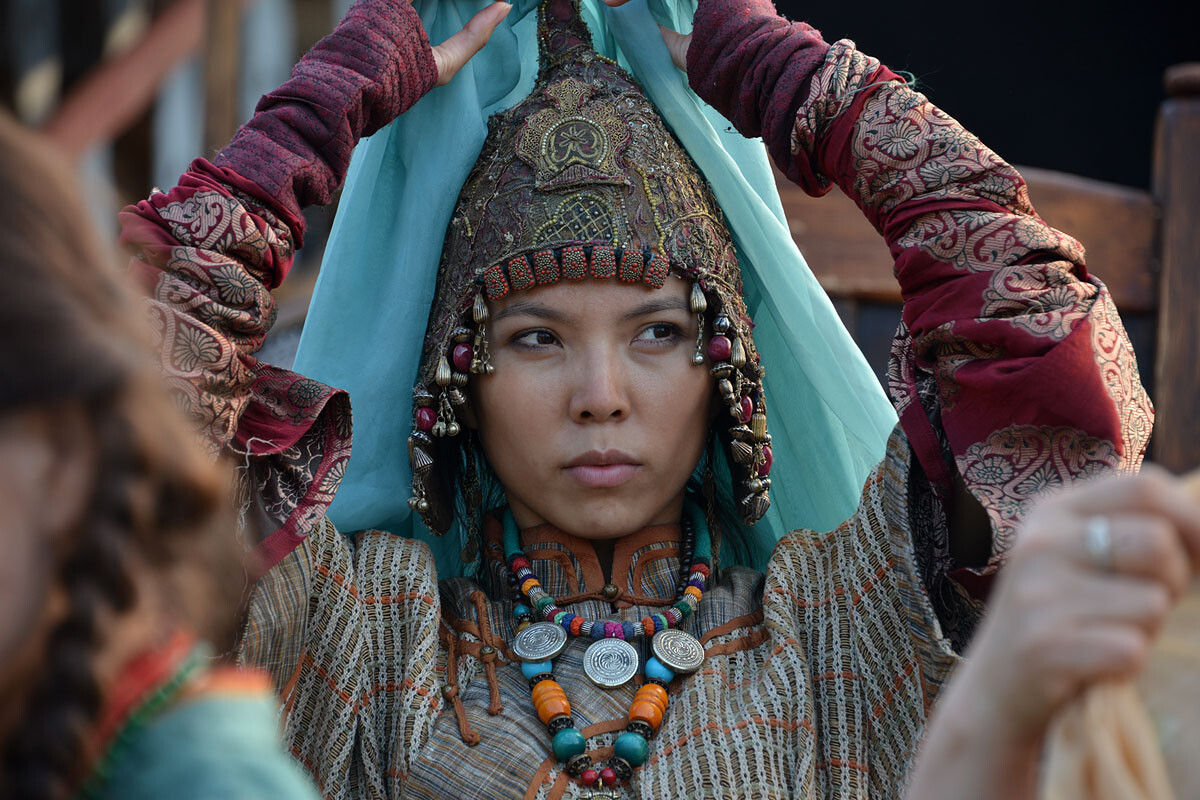
Asian noblewoman, a still from "The Golden Horde" series, 2018
Timur Alpatov/AMEDIA, 2018This wedding was out of the ordinary – in 1317, Moscow Prince Yuri Danilovich married Konchaka, the sister of the Khan of the Golden Horde, Uzbek Khan. At the same time, both spouses changed their status – Konchaka was baptized into Orthodoxy and became Agafia, while Yuri Danilovich, according to the laws of the Horde, received the title of gurgan – brother-in-law of the Khan himself. The dynastic marriage was probably meant to strengthen relations between the Horde and the Russian princes, but the life of Yuri and Agafia together didn’t last long.
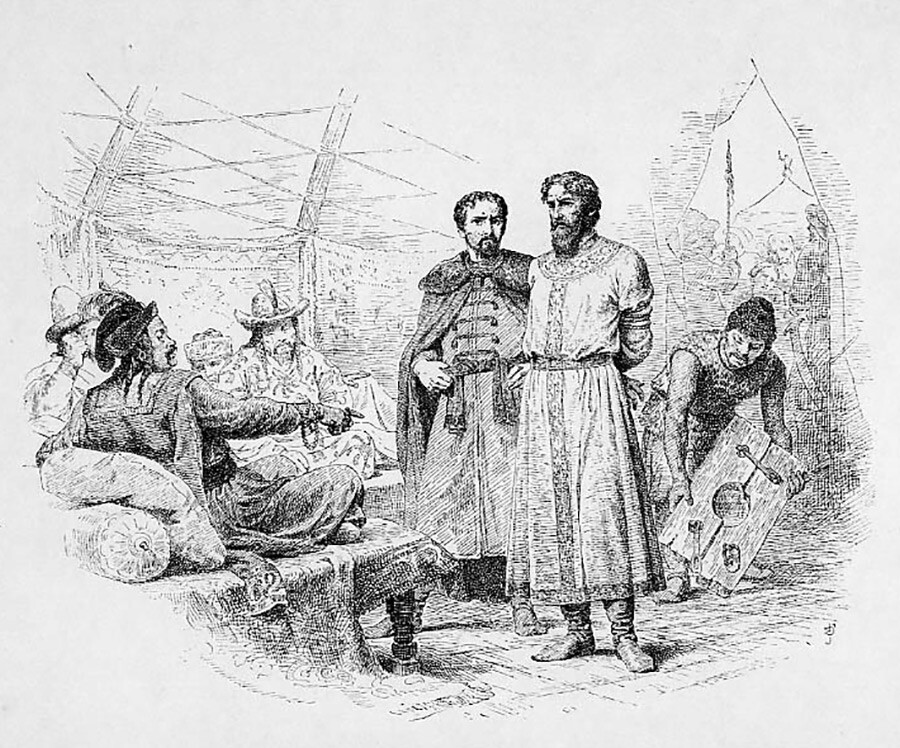
Mikhail of Tver at Khan Uzbek's, drawing by Vasiliy Vereschagin
Public domainIn the same year of 1317, Prince Yuri went with a campaign to the Tver land and took his wife with him. After Yuri was defeated in the Battle of Bortenev, Agafia was captured by Tver prince Mikhail Yaroslavich and soon died in captivity in Tver. There were rumors that she was poisoned.
Nothing more is known of her life, but her death was the first link in the chain of great events. In a rage at his sister’s death, Khan Uzbek summoned Mikhail of Tver to the Horde, tortured him and, finally, executed him, with the people of the Moscow Prince Yuri taking part in the execution. These events shattered the Tver principality and it soon surrendered its positions to Moscow. It turns out that Moscow princes owe their ascendancy partly to the late Tatar princess.
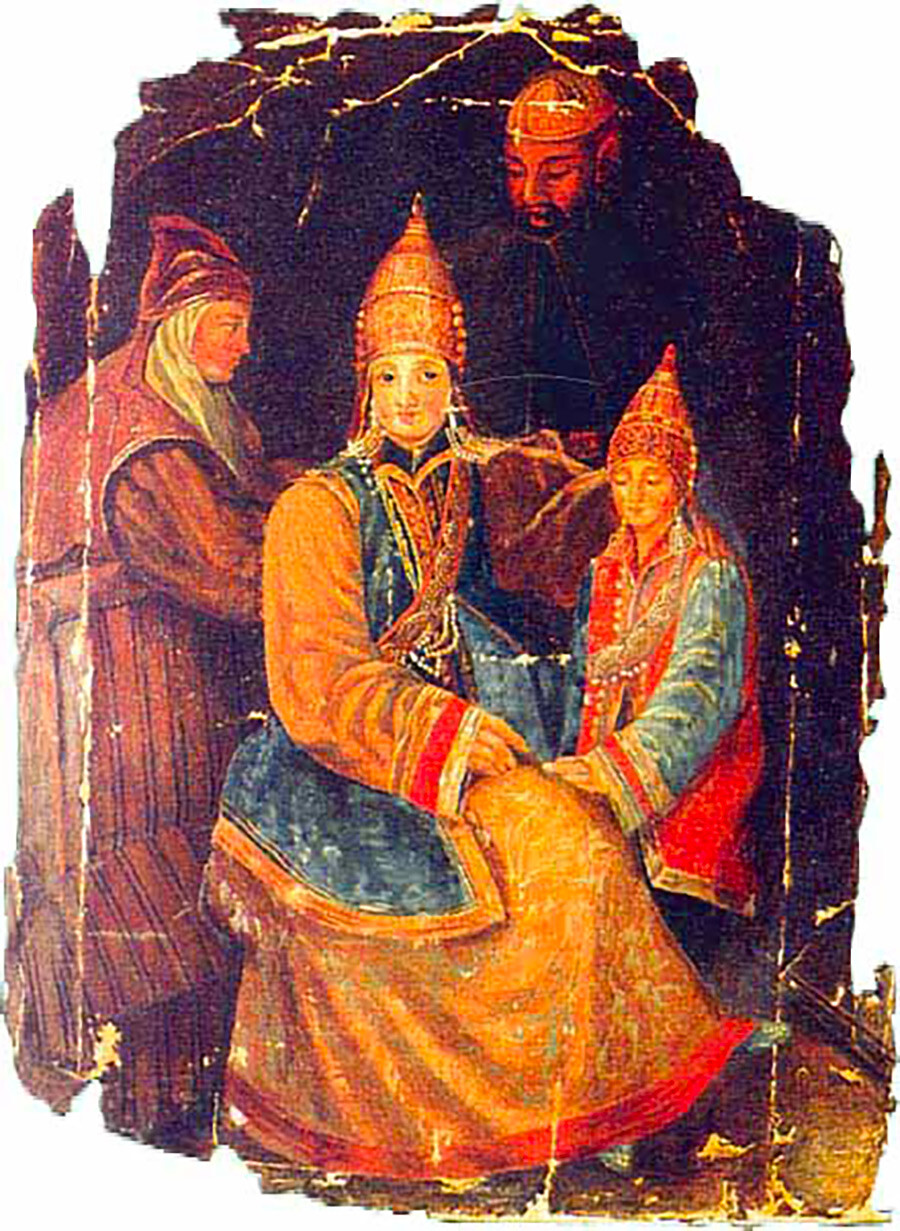
Original portrait of Söyembikä of Kazan with her son, by unknown painter, 16th century.
Public domainLegend has it that it took seven days for Ivan the Terrible to conquer Kazan and, in honor of each day, a tier of the seven-story Söyembikä tower was built in the Kazan Kremlin. It was from this tower that Princess Söyembikä jumped down when the Moscow tsar wished to marry her. However, ‘Söyembikä Tower’ wasn’t built until the early 18th century and Kazan was taken by Ivan the Terrible, as we know, in the 16th century and not in seven days, but during several years and at least two major military campaigns. Everything else in the story is also a legend – except the princess herself.
From her early years, Princess Söyembikä was an important figure in the political game between Moscow and the Kazan Khanate. Söyembikä was the great-granddaughter of Yedigei, the founder of the Nogai Horde (a state on the banks of the Volga River, formerly a part of the Golden Horde). Her father, a Nogai ruler named Yusuf, constantly waged war against Kazan and Moscow. At the age of 12, Söyembikä was married to Canghali, the 16-year-old Khan of Kazan, but it was an unhappy marriage – her husband did not pay attention to Söyembikä and they had no children. In 1535, the khan was killed in a coup and Söyembikä became the wife of the next khan of Kazan, Safa-Giray. To him, she bore several children, including Utyamysh Khan, who inherited the Kazan throne at the age of two, after the early death of his father in 1549.
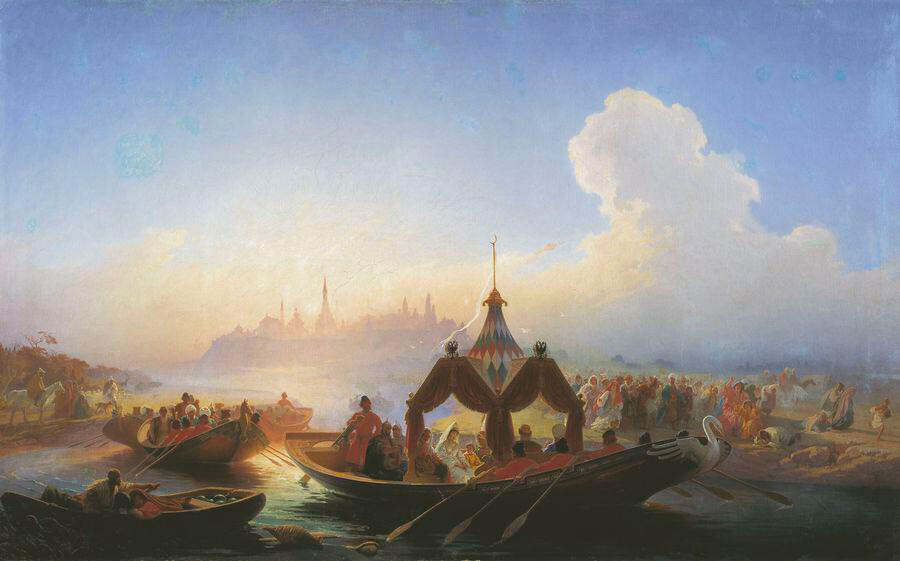
Captured Söyembikä leaving Kazan, 1870, by Vasiliy Khudyakov
Ulianovsk Art MuseumThus, Söyembikä became the regent of the Kazan Khanate, but, in 1551, amidst Ivan the Terrible’s campaign, she was handed over to him by the Kazan inhabitants together with her minor son and the Kazan treasury – the townspeople wanted Shahghali, another khan, on the throne. Söyembikä was taken to Russia, her son Utyamysh was baptized into Orthodoxy as Alexander Safakireevich and served in Ivan the Terrible’s army. Söyembikä herself ended her days in the town of Kasimov, the capital of the Qasim Khanate. In 1553, she was forcibly married off to the same Khan Shahghali, who became the ruler of Qasim Khanate after Ivan the Terrible had expelled him from Kazan and annexed the Kazan Khanate to the Moscow lands.
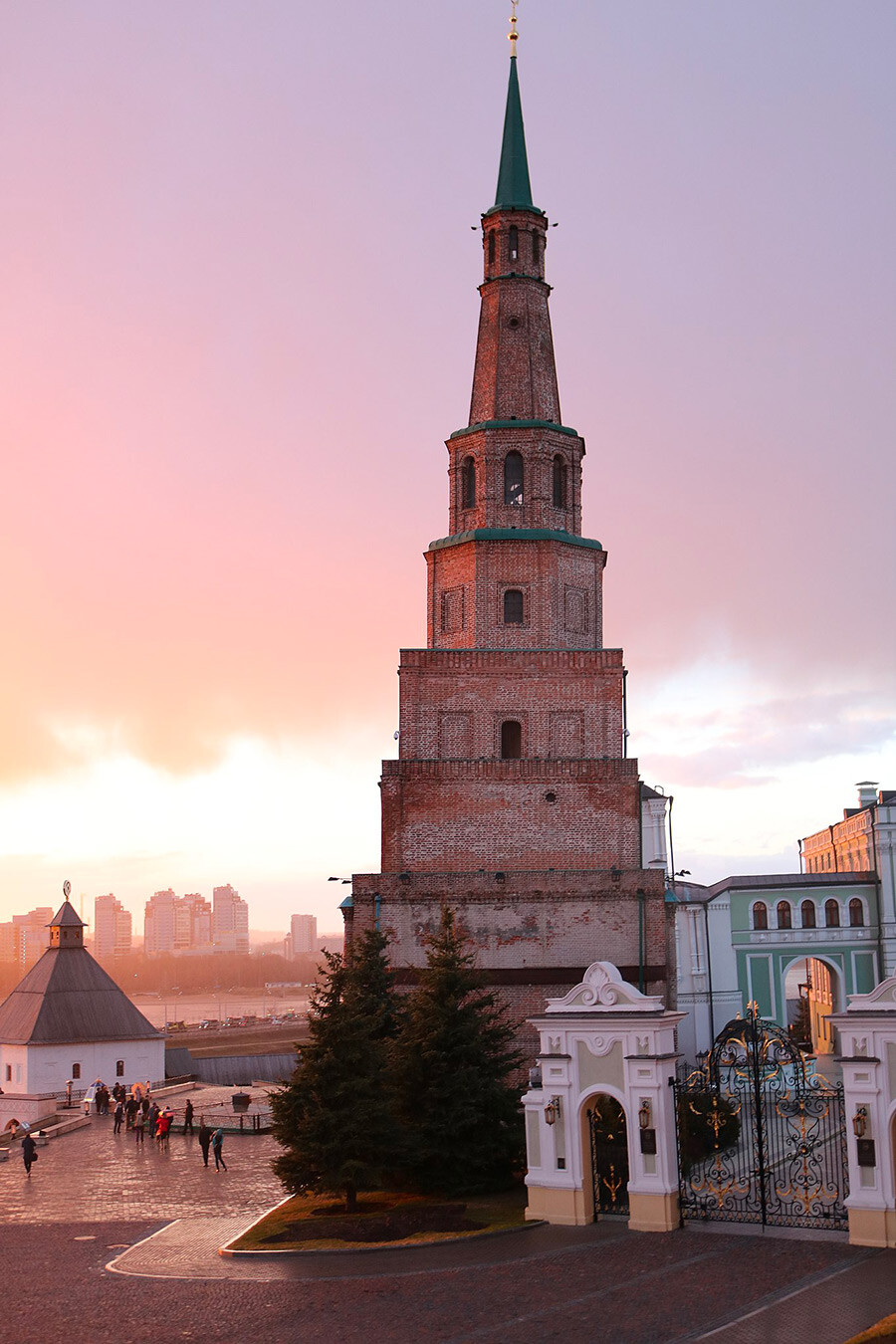
Söyembikä Tower in Kazan
Aleksey Shubin (CC BY-SA 4.0)How and where Söyembikä died is unknown. There is a hypothesis that she lived under the care of her personal bodyguard in the outskirts of the town of Vyksa. Meanwhile, the Söyembikä Tower is still one of the main symbols of Kazan.
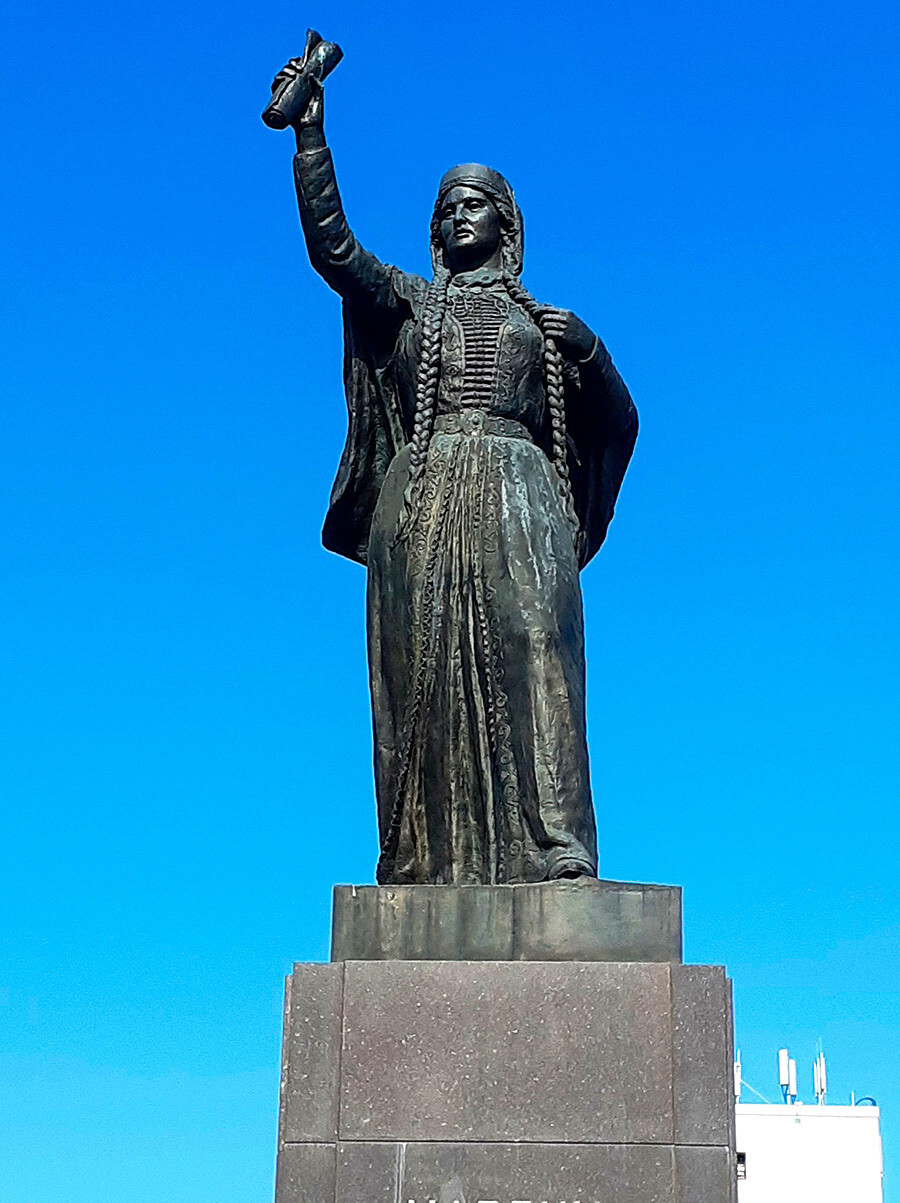
The monument to Maria Temryukovna in Nalchik, Kabardino-Balkarian Republic, Russia.
Masha Linnik (CC BY-SA 4.0)Ivan the Terrible could not take Söyembikä as a wife primarily because, by that time, he was already married – since 1547, to Anastasia Romanovna, who died suddenly in 1560. Studies of her remains confirm that the tsarina was poisoned. After her death, Ivan fell into a severe crisis, not knowing whom among the nobility to blame for poisoning his beloved wife. However, a week after Anastasia's death, the Tsar began to look for a new wife.
Princess Kucheney was the daughter of Kabardian Prince Temryuk, not a stranger at the Moscow court – since 1557, his son and Kucheney’s brother, Saltankul, served Ivan the Terrible, having been baptized under the name of Mikhail Cherkassky. After the death of Anastasia, Ivan sent matchmakers to Prince Temryuk and they chose Princess Kucheney as a future wife of the tsar. In 1561, the princess arrived in Moscow, was baptized under the name of Maria Temryukovna and became tsarina. Tsar Ivan presented the bride with rich gifts, including a three-kilogram dish of pure gold. English diplomat Jerome Horsey wrote: “The rites and festivities that accompanied this marriage were so strange and pagan that it is difficult to believe that all this was happening in reality.”
Little is known about Maria Temryukovna’s life as tsarina. She accompanied Ivan on his frequent trips to the church and monasteries and, in 1563, gave birth to a boy, Tsarevich Vasily, who lived only five weeks. The royal couple had no more children and, in 1569, Maria Temryukovna died unexpectedly. As the tsar believed, she was also poisoned. The tsar’s servant Vasily Khomutov was declared guilty and he and his accomplices were boiled alive in a cauldron.

The town of Kasimov in the 17th century.
Public domainIn the city of Kasimov, the capital of the Qasim Khanate, lived a family of Alyanchikovs, merchants by trade. They said that their last name comes from the word ‘alyan’ - ‘stubborn’ in one of the Tatar dialects. Tsarina Fatima Soltan (? – 1681), the last ruler of Qasim Khanate, used to go about town in a carriage pulled by peasants. One day, one of the peasants rebelled against this order. “You are such an alyan,” the tsarina said to him, but she stopped harnessing people from then on.
Fatima Soltan was from an old noble Tatar family of Kasimov and became tsarina by marrying Arslanghali, the grandson of the Siberian Khan Kuchum. Arslanghali had lived in Russian captivity since his youth and when he became Khan of Kasimov in 1614, he was already a man of age. Khan was given due respect that his status of a royal person suggested – three times he had been in Moscow at the official receptions of Tsar Mikhail Fedorovich and his wife, respectively, had been received by Tsarina Evdokiya. However, the khan had no real power – for example, hardly 30 people served him as courtiers (which was negligible by the standards of the time – court people of Moscow boyars were usually counted in hundreds). Arslanghali died in 1626, leaving his two-year-old son Sayed Borhan as a Khan.
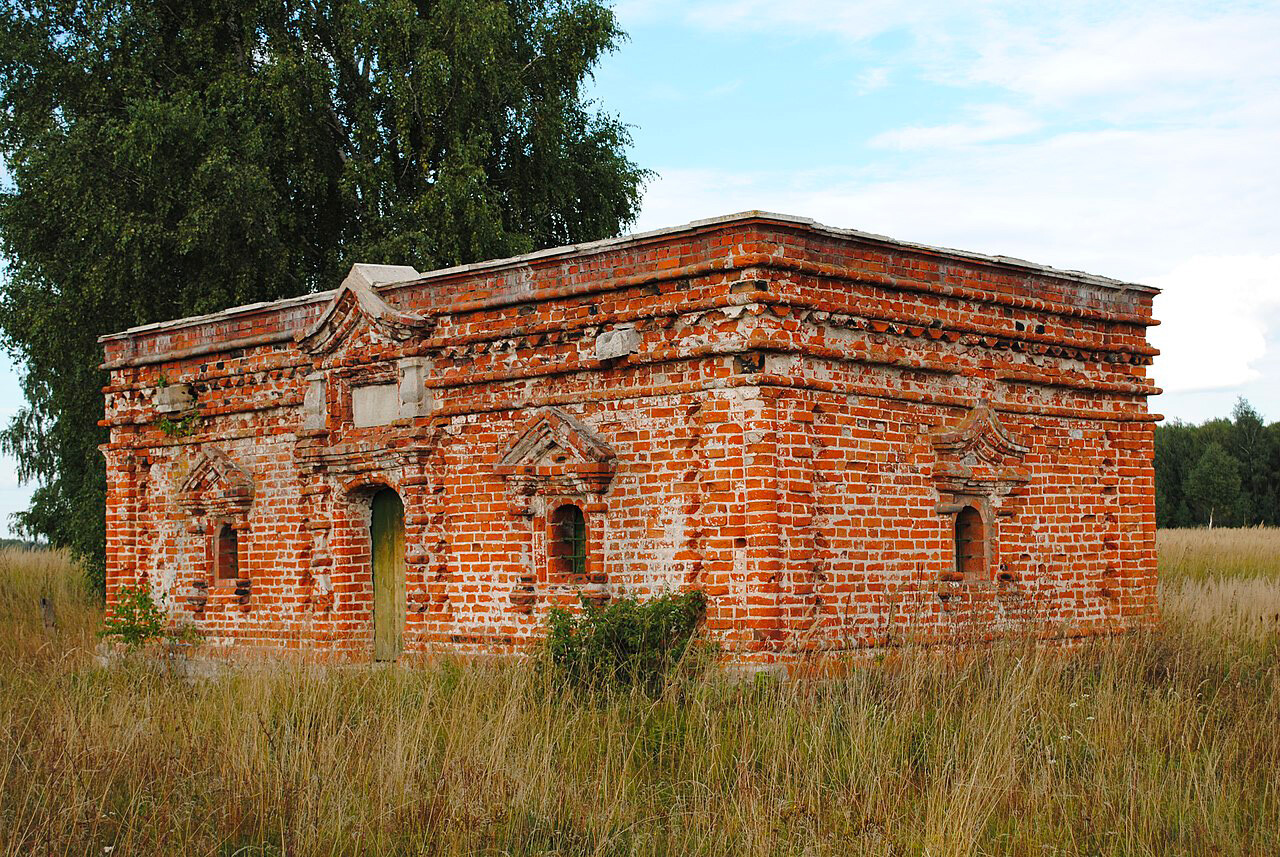
Mausoleum of Afghan Moxammad (Äfğan Möxämmäd) Khan (1658) in Kasimov. Fatima Soltan was buried in a separate masoleum near it (not preserved).
Vadim Ageev (CC BY-SA 3.0)At first, the de facto ruler was Fatima Soltan herself. She insisted that her son was not baptized into Orthodoxy as a child, giving him a possibility of a conscious choice later in life. But, already at age nine, Sayed Borhan was invited to the royal court in Moscow, emphasizing his status as a Kasimov ruler and, five years later, he already had his own court in Moscow. In 1653, already a grown-up, Sayed Borhan accepted Orthodoxy as Vasily Arslanovich and soon married a Russian woman by the name of Maria Pleshcheyeva. Nevertheless, in violation of all traditions of the Qasim Khanate, Vasily remained its ruler, despite not being a Muslim. As we know from a nuns’ petition to the Kazan Convent in Kasimov, Vasily Arslanovich and his mother supported the monastery: “The hegumenia and the nuns were fed and given water and clothes from their (Vasiliy and Fatima Soltan’s) income. But since the tsarevich and the tsarina are gone… we do not receive money or bread.”
Fatima Sultan survived her son, who died in 1679, and for the last two years of her life, ruled the Qasim Khanate again, which was abolished after her death in 1681.
If using any of Russia Beyond's content, partly or in full, always provide an active hyperlink to the original material.
Subscribe
to our newsletter!
Get the week's best stories straight to your inbox